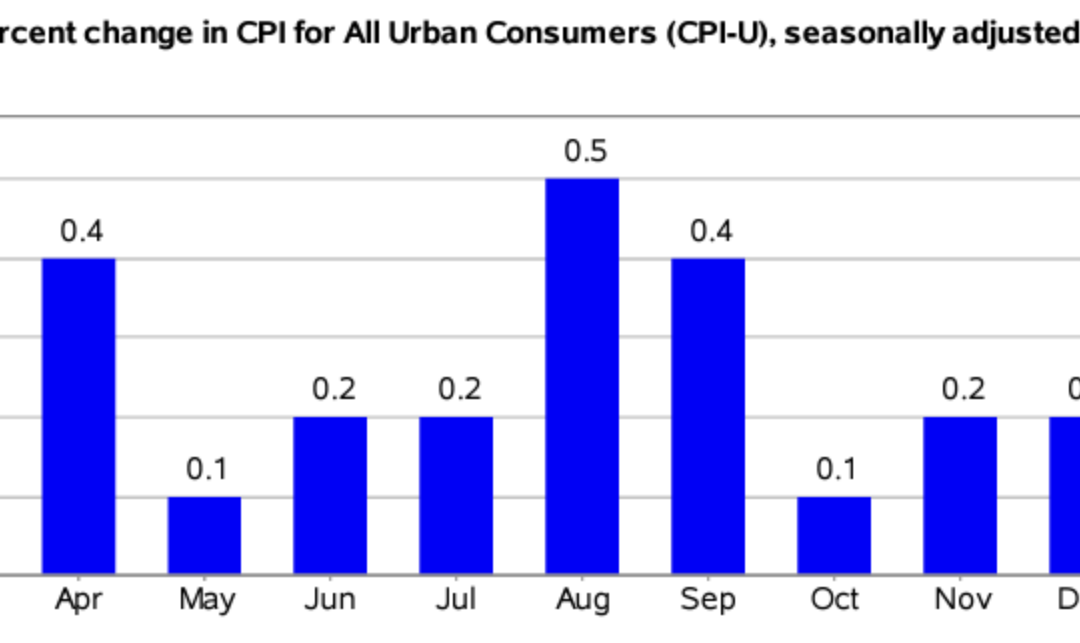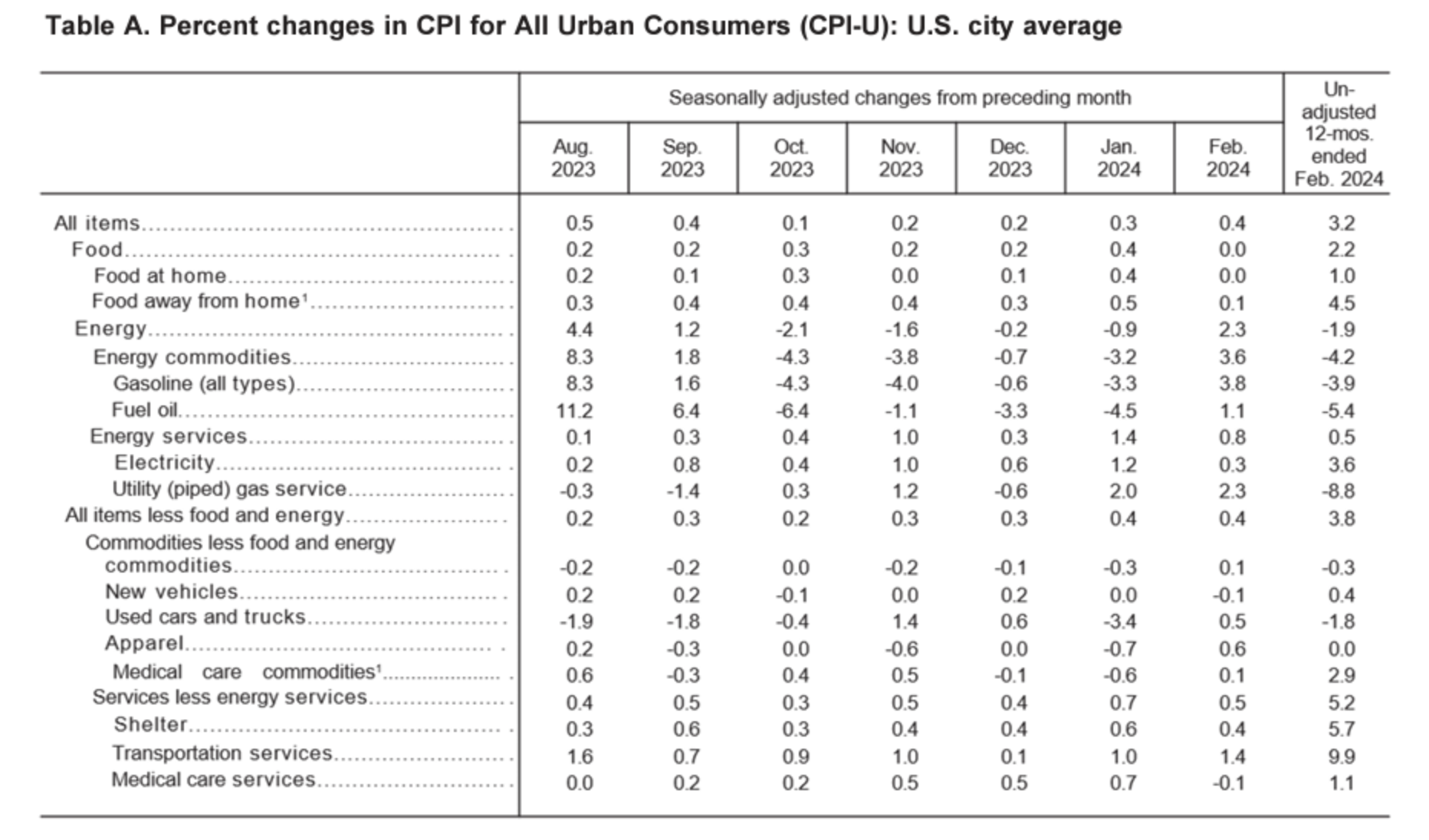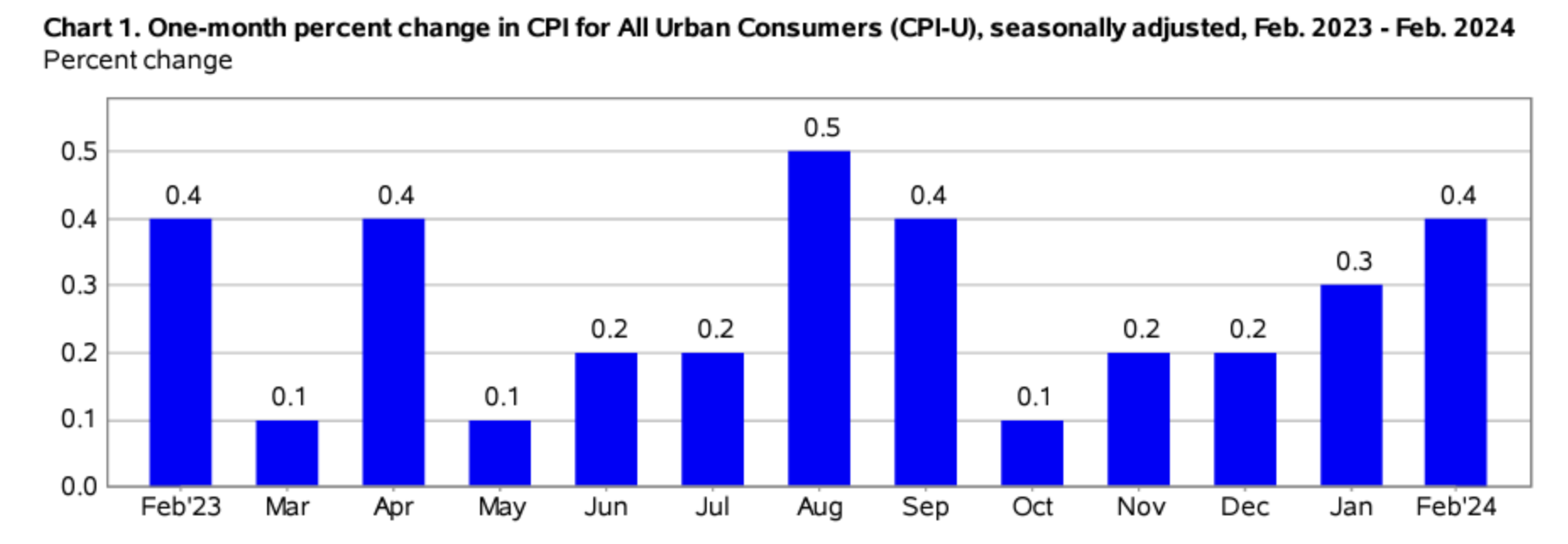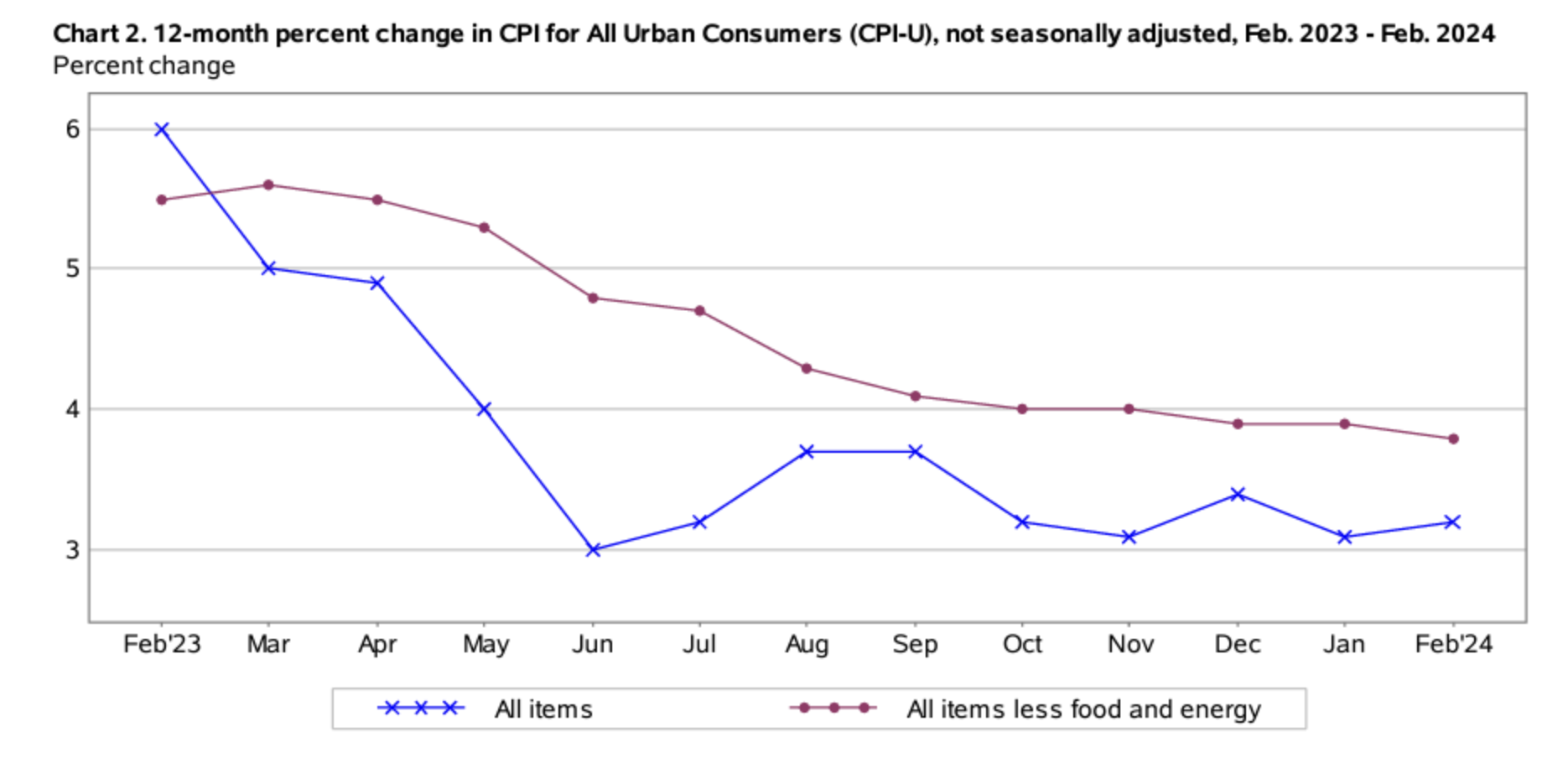The February 2024 Consumer Price Index of All Urban Consumers (CPI-U) report indicates that inflation rose by 0.4% for the month, exceeding the level of price acceleration seen in January (+0.3%) as well as December 2023 (+0.3%). These data were released at 8:30 am EST on Tuesday, March 12, 2024, by the Bureau of Labor Statistics. Before seasonal adjustment, the year-over-year (Y-o-Y) inflation rate in the all-items index grew by 3.2%, marking a small yet notable acceleration from January’s 3.1% CPI reading, yet declining from December’s hotter 3.4% reading.
According to the Financial Times, this month’s CPI increase was unexpected by economists—data that will surely be scrutinized by the U.S. Federal Reserve during their upcoming FOMC meeting. Heading into Tuesday, the consensus among analysts and market watchers was that inflation would likely remain the same on a Y-o-Y level at 3.1%. After today’s news, it stands to reason that the Federal Reserve may delay their expected interest rate cuts further into 2024 than expected.
Today, the Federal Reserve’s federal funds rate sits at 5.25 to 5.5%, a 22-year high, and borrowers and investors alike have been waiting with anticipation for nearly a year for inflation to come under control. January’s inflation report may have dashed any hopes for interest rate relief before Q3 2024.
Global markets, however, responded positively to this month’s inflation report. At the time of writing, European markets (represented by the Stoxx 600 index) traded 0.5% higher on Tuesday morning, with financial services and travel stocks leading the charge. As of mid-day Tuesday, the Dow Jones Industrial Average (+214 points) and the S&P 500 (+45.56) were both trading in the green.
Driving inflation this month was a high shelter index and rising gasoline prices. Together, these two price categories contributed to over +60% of this month’s price acceleration. Regarding “core” inflation (e.g., all items less food and energy), the index rose +0.4%, the same rate at which it accelerated in the previous month. These data indicate that fighting “last mile” inflation may be much more difficult than market watchers would have expected.
Source: Bureau of Labor Statistics
Food Prices
The food index remained unchanged in February, as did the food at home index, both of which matched the level of acceleration seen in January (+0.4%) on a month-over-month basis. Notably, three of the six primary grocery indices decelerated in February, including the following:
- Dairy and related products: (-0.6%)
- Cheese and related products (-1.1%)
- Fruits and vegetables (-0.2%)
- Nonalcoholic beverages index (-0.2%)
On the other hand, price acceleration was seen in various price categories, including the index for full-service meals (+0.1%), food at home (+2.3% Y-o-Y), food away from home (+4.5% Y-o-Y), and cereals and bakery items (+1.7% Y-o-Y).
Energy Prices
Regarding energy prices, the energy index rose +2.3% in February, marking a major increase over January’s +0.9% rise. The price acceleration in this category was driven largely by higher gasoline prices, which increased +3.8% in February. The natural gas index rose +2.3% on the month while electricity prices rose +0.3%. Meanwhile, the fuel oil index rose +1.1%.
Core February 2024 CPI
The core CPI data for February 2024 the index rose +0.4% month-over-month, accelerating by the same margin as it did in January. On a Y-o-Y basis, the core CPI index rose +3.8%. Below is an itemized breakdown of the main price fluctuations seen in January’s core CPI reading:
- Shelter index: (+0.4%) [January: +0.6%]
- Rent index: (+0.5%) [January +0.4%]
- Owners’ equivalent rent: (+0.4%)
- Motor vehicle insurance: (+0.9%) [January: +1.4%]
- Medical care index: (+0.5%) [January: +0.5%]
- Airline fares: (+3.6%) [January: +1.4%]
- Hospital services: (-0.6%)
- Physician services: (-0.2%)
Source: Bureau of Labor Statistics
Seasonally Unadjusted CPI Data for February 2024
Before seasonal adjustments, the CPI-U for February 2024 increased (+3.2%) year-over-year, rising to an index level of 310.326. Since these figures are unadjusted, they include regular seasonal price fluctuations that generally occur by the same margins every year.
Source: Bureau of Labor Statistics
Inflation’s Grip Tightens: Gold Glitters Amid Uncertainty
As inflation continues its upward trajectory, reaching 3.2% in February 2024, up slightly from 3.1% in January, the prospect of imminent interest rate cuts by the Federal Reserve dims. Analysts now look toward the summer months, speculating on the potential for monetary policy adjustments, albeit with caution.
The economic strain is palpable across American households. Inflationary pressures have eroded the financial resilience of families, with healthcare expenses notably on the rise. Despite a buoyant job market, the American populace remains encumbered by the inflationary weight, with a significant majority labeling the economic situation as dire.
Amidst this financial turbulence, certain assets shine as beacons of stability. Last week, gold bullion reached an all-time high of $2,160 per troy ounce, solidifying its status as a safe-haven asset while markets are in disarray. Cryptocurrencies like Bitcoin and Ethereum have also seen a resurgence, bolstered by the introduction of eagerly awaited ETFs, with the former also setting a price record earlier this month above $70,000 per token.
Gold and silver, time-honored bulwarks against inflation, may present a golden opportunity for investors to shield their wealth from currency devaluation and safeguard their retirement savings from the eroding power of the dollar.
Thinking about diversifying into precious metals? Talk to your financial advisor about initiating a gold IRA account today, allowing you to invest in this red-hot asset on a tax-advantaged basis. Additionally, our complimentary CPI inflation calculator remains at your disposal, enabling you to assess inflation’s impact on your finances. Remember, seek the guidance of a financial advisor before making any investment decision.






